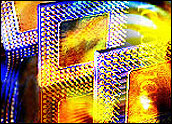
Despite the arrival of a plethora of new tablets and Ultrabooks, plus a new operating system from Microsoft that was expected to drive PC sales, 2012 was a gloomy year for chip manufacturers. As any confident gambler might do when the chips are down, the leading consumer electronics original equipment manufacturers are expected to double down in 2013.
Sony and Toshiba, for example, are expected to increase purchases next year, according to IHS iSuppli. Sony is expected to purchase some US$8.4 billion worth of semiconductors — up nearly 5 percent from 2012 — while Toshiba will make a less risky gamble but still increase by 2 percent to $6.1 billion.
Is this akin to a gambler trying to “buy” his way back to holding a large chip stack?
“It is in some cases, especially when it comes to consumer electronics,” said Myson Robles-Bruce, senior analyst for semiconductor spending and design activity at iSuppli.
“Sony and Toshiba are spending more next year for semiconductors as a way to innovate and press forward even as [2012] has been poor for them,” he told the E-Commerce Times.
Out With the Bad
Undoubtedly, 2012 hasn’t been a banner year for electronics. The major consumer electronics OEMs continue to struggle financially, especially as increased competition in all categories has gotten consumers looking for cheaper products.
The OEMs are now responding by taking measures to cut costs in order to shore up profits. At the same time, they are hoping their luck and fortunes will improve in the New Year. This is apparent as they take steps to invest in even more innovative products. This means greater investment and spending in semiconductors into 2013 and beyond.
“The most critical point to remember about semiconductors is that while the general outlook seems pretty grim — with industry-wide growth in 2013 estimated at 2-3 percent — some sectors are faring far better than others,” said Charles King, principal analyst at Pund-IT. “While life is hard for major traditional consumer electronics players, companies deeply invested in mobile semiconductor-based devices including smartphones and tablets — Qualcomm and Samsung — have a lot to be happy about.”
Some of the players are unwilling to take the risk, though.
“Panasonic and Sharp, in contrast, are holding back,” King told the E-Commerce Times.
Slow Start
In general, the industry is likely to see tepid progress at first.
“We expect a slow first quarter 2013, with some pick up in the second quarter,” said Christian Gregor Dieseldorff, senior analyst and director of market research at Semi. “The second half of 2013 is expected to show the largest spending.”
Revenue projections also are looking up.
“The revenue predictions for 2013 are quite positive,” Dieseldorff told the E-Commerce Times. “The average forecast for 2013 is about 7.5 percent growth with 16.6 percent highest and 4.2 percent lowest. Historically, revenue and spending ride the same roller coaster. If revenue keeps looking good, companies will adjust their spending.”
Supply and Demand
Demand for devices is likely to continue, and if the global economy picks up, that demand will further increase. At the same time, the industry has taken steps to ensure that demand is on par with supply so as not to create a glut that would only bring prices down.
“We expect that the semiconductor industry, which cut the amount for new added capacity down to 4 percent in 2012, will cut by 3 percent in 2013,” said Dieseldorff. “I expect that this stabilizes ASPs, and that foundries such as TSMC will return to profitability. Also, Samsung posted record profit on consolidated revenues ending Oct. 2012. I expect Samsung will be profitable also in 2013.”
Emerging Markets
How this plays out depends on numerous factors, and even a small development in a faraway market could shift potential growth in semiconductors. The “butterfly effect” — i.e., the flapping of butterflies’ wings in Mexico leading to a storm in Japan — could be an apt comparison. A technological butterfly effect could show up on the radar into 2013.
How the chip industry succeeds “will really depend on how well the global economy performs, especially in markets like China and India where CE vendors are heavily exposed,” noted Pund-IT’s King.
Chips to Tablets
Although Intel pegged its hopes on Ultrabooks, 2012 turned out to be the year of the tablet, which was already evident at last year’s International CES. Tablets are once again expected to make an impact when CES dazzles the tech world this month, even if handsets are the largest sub-market for semiconductors.
“Samsung and Apple are going to remain the major buyers of semiconductors,” said iSuppli’s Robles-Bruce. “You can really trace this back to when Apple introduced the iPad.”
Despite the segment’s vitality, it’s possible that semiconductor market demand could be as thin as those tablets.
“It will be modest growth,” Robles-Bruce noted. “It will be a much better year, but it isn’t going to be like 2010.”
Mobile across the board will continue to dominate markets worldwide, however, and this trend could be impervious to the economic issues impacting other sectors.
“A lot of that is due to price/performance issues — that a buck spent on a smartphone delivers a bigger bang than one spent on a higher-cost product,” said King. “CE devices — TVs, consoles, audio, etc. — tend to be particularly sensitive to economic conditions, so the threat of a recession or similar downturn could be disastrous for those markets.”
“Computers are harder to parse, mainly because a significant percentage of existing PCs and notebooks are 4 or more years old,” King added. “New hardware features, including next-gen CPUs, SSD drives and touch-enablement — plus the introduction of Windows 8 — could provide the spark that makes this market take fire, whether the larger economy warms up or not.”





















































Social Media
See all Social Media